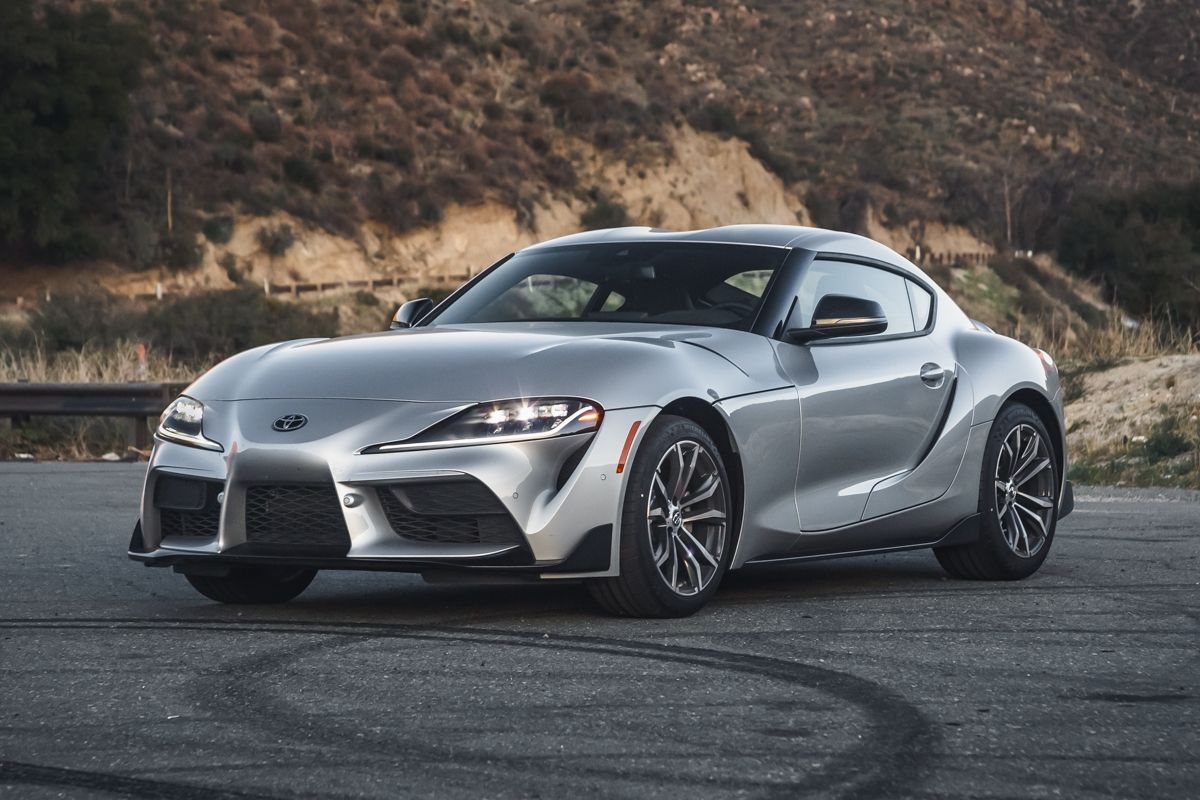The 90s were an interesting time for Toyota. The Lexus brand was only just starting, and the world economy was doing well, which meant people had disposable income for cars. That meant Toyota could be creative and they went for it, both in the Japanese domestic market and abroad. Want a car with gullwing doors? No problem. How about a small light hatchback with a turbocharged engine? Just pick a color. Want a mid-engined sports car for the price of a Camry? Not an issue. Want a road-going version of the car dominating World Rally Championship? Toyota did just that. Want a sharp and comfortable sports car with a twin-turbo monster under the hood that'll become a tuner legend still being used for decades to come? Let's start there:
Toyota Supra Turbo
The Supra was a big deal when it showed up in the 90s, but in its pumped twin sequential turbo guise, it was more than capable of running with the big guys. It made 320 horsepower in 2JZ-GTE engine form, but it wasn't until tuners realized they could take that engine and crank that straight-six to 400 horsepower easily that it took on a life of its own. When 1,000 horsepower numbers started showing up, it became a very, very, big deal.
The Supra was more than an engine though. In reviews, journalists praised its effortless but razor-sharp performance and it was compared, often favorably, with the BMW M3 of the days in terms of handling, refinement, and comfort. Comparing with a BMW has reverberated across the decades with the new Supra and Z4 first drive reviews starting to land.
Toyota Celica GT-Four
In the 1990s, the Celica was mostly a front-wheel-drive model. Some markets did get the all-wheel-drive GT-Four, and that's the Celica we know best through its WRC success and most famously piloted by Carlos Sainz, Juha Kankkunen, and Didier Auriol to WRC drivers titles in 1992, 1993, and 1994 respectively. The ST-185 generation GT-Four also earned the WRC manufacturers title in 1993 and 1994.
The Japanese, Australian, and European markets got the all-wheel-drive Celica GT-Four ST205 built for homologation in WRC. Only 2,500 were built and included a turbocharged straight-4 engine ready plumbed for an anti-lag system, a water injection system, a hood mounted spoiler and the iconic extended rear spoiler, and it rode on Toyota's Super Strut Suspension.
Toyota Sera
In Toyota's deep back catalog is the little known Sera. It never came to America but those in the know wish it had. It was a product of that 90s money that allowed automakers to freely fill the smallest of niches, and this one was for a sporty looking little economy coupe with gullwing doors. Oh, how we miss the 90s.
Toyota Z30 Soarer
The third generation Soarer was designed in Toyota's Calty Design Research studio in California. We knew it here in North America as the front-mid-engined Lexus SC 300 and 400. It was one of the first cars to come with a factory GPS system and, for people that remember old-school technology, that was fueled by CD-ROM. In Japan, it came with different interior and powertrain options including a single or twin turbo 1JZ engine.
Toyota Corolla Levin / Sprinter Trueno EA111
While the previous AE86 is the stuff of compact rear wheel drive legend, you might still want to intensify the Eurobeat for the 1995-2000 Corolla twins. They were both front-wheel drive based on the E100 generation Corolla and were a solid alternative to the Acura Integra. The BR-Z was the one to own though with its 6-speed manual transmission, larger front brakes, limited slip differential, upgraded suspension, and the option of Recaro SR3 seats.
Toyota Starlet GT Turbo
We only saw the Starlet for a few short years in the 1980s, but the car had a long production run. The JDM Starlet GT Turbo is the rarest model, and it was a potent little hatchback made from 1990 to 1995. It had a turbo version of the 4-cylinder engine that made 133 horsepower while the car only weighed 1,962 lbs. That gave the Starlet GT Turbo a belligerent 134 horsepower-per-ton ratio.
Toyota Caldina GT-T
If this looks familiar to Europeans, it's the JDM wagon version of the British built Toyota Avensis. The Caldina launched in Japan in 1997 and the top-trim GT-T model featured an all-wheel-drive drivetrain with a lot in common with the Celica GT-Four. What stopped it from becoming a JDM wagon legend is the lack of reliability in the GT-T's engine and its habit of losing main bearings and oil pump gears shattering.
Toyota MR2 Turbo
While we didn't get the G trim levels in the US that included turbocharged engines, we did get the no-nonsense MR2 Turbo. The Turbo 2.0L 3S-GTE engine produced 200 horsepower versus the naturally aspirated 2.2-liter engine's 130 horses. While that's not a big lump of power, the MR2 is small, light and mid-engined and that's 19 more than the current MX-5 has to offer.
Toyota Mark II Tourer V
The JDM Tourer Mark II started out as a sub-compact car designed to meet Japanese exterior dimension regulations but grew through its generations into a full-size sedan. The 7th generation even came with options forToyota's legendary 1JZ and 2JZE engines. The Mark II Grande was the car that could come with the twin-turbo 2JZ, but the version that became popular with drifters and tuners is the Mark II Tourer V. This came with a twin-turbo 280-horsepower 2.5-liter 1JZ-GTE inline-six engine and optional Torsen LSD and 5-speed manual transmission.

